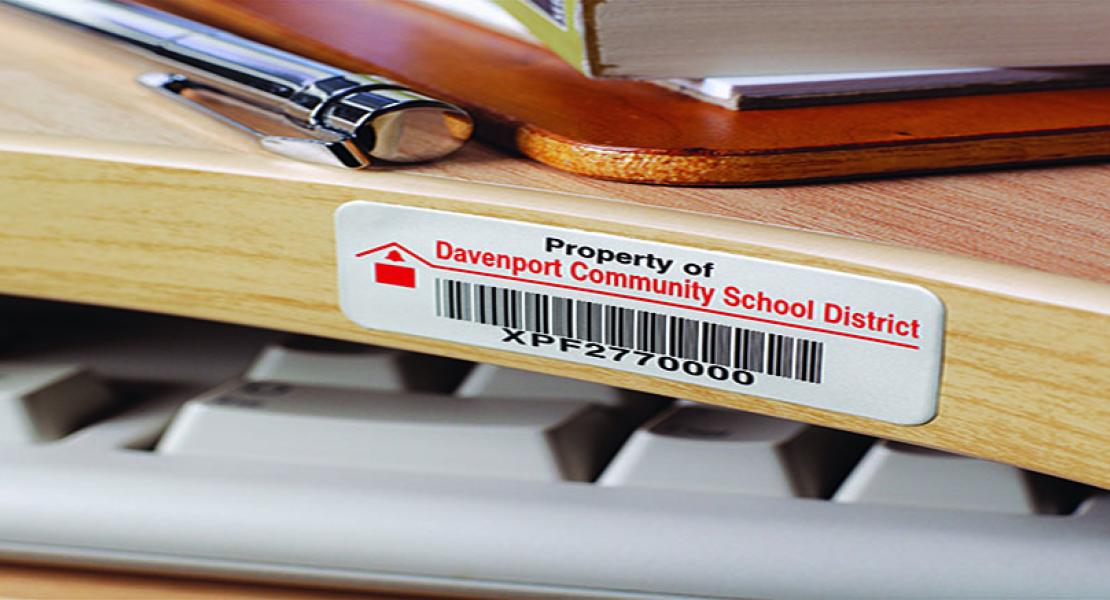The asset tag and asset tagging is one of the most crucial, yet often overlooked, components of an effective asset tracking system. It is literally the key to unlocking valuable information about the asset it is tracking. Below are some of the questions we receive about the unsung hero of the asset tracking world.
What is a fixed asset tag?
A fixed asset tag is a tag or label used to identify equipment using a unique serial number, barcode and/or RFID tag. Technically speaking a fixed asset is a long-term tangible asset that a business owns and uses and is not expected to be used or sold within a year. What that asset is depends on the type of business it belongs to. Schools and hospitals, for example, will have different fixed assets than a manufacturing company. IT assets like laptops, monitors, printers, etc. are commonly seen across different industries.
What industries benefit from asset tracking the most?
The short answer is any industry can benefit from asset tracking. It really depends on what you put into the system upfront ensuring everyone has bought into the concept and the data entered is clean and update procedures are followed. Every industry should want to know where their equipment is, what the value is and what the maintenance/upgrade schedule is. An effective asset tracking system will help organizations in any industry maximize the use of their assets.

What are best practices in asset tag tracking setup?
Putting in the necessary groundwork before implementing an asset tracking system helps ensure the system will run smoothly. From selecting the guidelines for what should be tracked to selecting the right tag and data scheme, there are as many things to consider that will make the asset tracking system more effective. To assist you with this process we’ve developed an Asset Tracking Checklist which is a great supplemental piece to our Ultimate Guide to Asset Tracking. The checklist will walk you through the process of setting up an asset tracking system step-by-step. Both pieces are valuable resources in setting up an effective asset tracking system.
What needs to be included on an asset tag?
Simply stated you can include as much or as little information as you want on an asset tag. Some customers elect to include their company name and/or logo which allows the asset tag to serve multiple purposes – asset tracking, advertising and/or product identification. When it comes to what numbers to include on the asset tag, we advise customers to employ a “license plate” approach meaning printing a barcode and/or serial number on the asset tag and associating that number with the information about that asset in the database on the backend. This approach takes less room which translates into a smaller asset tag as well as a smaller price tag. We also strongly encourage customers to employ some type of automation into their asset tracking system whether it be barcode or using asset tracking RFID tags. Typically there is minimal additional cost when adding a barcode and if a customer has aspirations to move to RFID eventually they can always get the tags done with both a barcode and RFID inlay so they are ready once they have the correct infrastructure in place.
How do you mark a fixed asset?
There are different methods for marking a fixed asset. From direct parts marking to embedding asset tracking RFID tags into the asset itself, each method offers different advantages and disadvantages. Using a tag or a label with the information printed on it is a very popular way to mark a fixed asset, but even with that there are a number of ways the label and/or tag can be produced. Customers may choose to purchase a thermal transfer printer themselves and print the asset tags onsite or they may choose to have them preprinted. Advantages of printing the asset tags onside include not having to know the information going on the tag ahead of time and literally being able to print the label and/or tag on demand. Advantages of having the tags preprinted include not having to worry about printer maintenance and training, ensuring you have the right materials for the tag so it will survive the environment it will be exposed to, and having someone else track your serial number history ensuring there is not duplicates which can wreak havoc for any asset tracking system.
For more information about asset tracking or to talk to one of our ID Experts about your application please contact us at 800-437-5283 or [email protected].
 | About the Author: Marianne AlvaradoMarianne Alvarado is our Vice President of Sales. Alvarado joined Metalcraft in March of 2000 as a Territory Specialist, became Sales Manager in January 2022 and was named Vice President of Sales during August of 2023. She leads both the Outside and Inside Sales teams. Marianne lives in Davenport with her husband, Dave Beeman. Mobile Phone: 641-529-9492 Email: [email protected] Office: 3360 9th St. SW, Mason City, IA 50401 Office Phone: 641-423-9460 |




